I canít believe itís been over three years since I was looking at my speedo gearboxes.

With a little prodding from Steve I finally tore into them and yes, they are re-buildable. I have four and figured I might as well rebuild all four at the same time. I could hardly move two of them, including the one from #97. Hereís the one from #97 all apart.
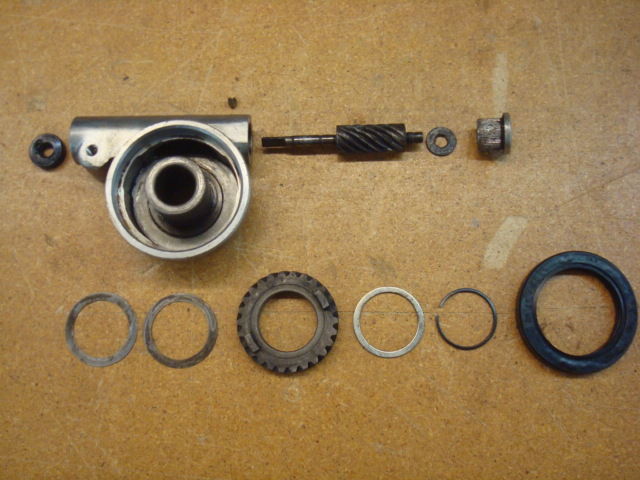
First I removed the big seal. Then there is a retaining ring. This was a little tricky since itís only a wire. I held against one end of the ring with a small screwdriver and got under the other end with a dentist pick and carefully worked it out. Then I removed the gear. There is a washer on top and two shim washers on the bottom. Next I removed the set screw that holds the cap in. Itís an M4 and itís only about 4mm long so not very big. Of course the screws came out easy except on #97. I think it was recessed a bit more than the others and because there was a slight taper on the sides of the screwdriver it didnít engage completely and stripped out the slot.
Time to get creative again. I picked up a 1/16Ē diameter left hand drill. Plan A was that it would bite into the screw enough to back it out. Iíve had that work on screws that werenít in very tight but not this time. Plan B was to tap a little square end driver into the hole and back it out. Fortunately that worked.
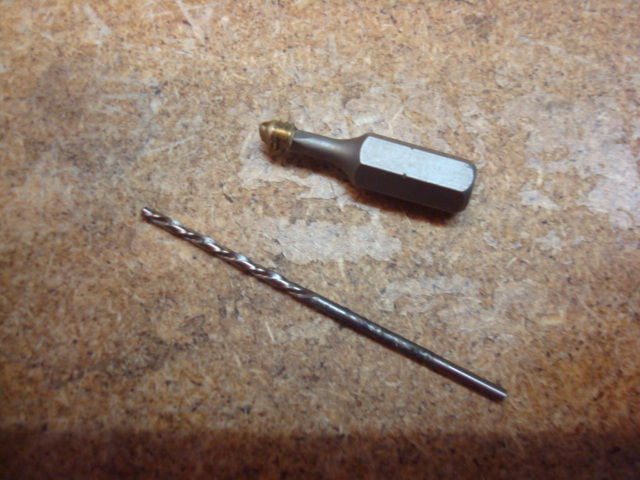
Now to get the end cap off and remove the worm. The diameter of the flange on the end cap was just under 11/16Ē so I drilled an 11/16Ē hole in a piece of bar stock so I could support the housing while I tapped out the worm and cap. Against Steveís advice I did pound on the end of the tang. Partly I was feeling lazy and partly I wasnít sure what Steve did. I used a piece of 9/16Ē diameter stock which is just under the diameter of the hole so it helped me keep the force centered on the shaft. Plus I was careful and didnít hit very hard.
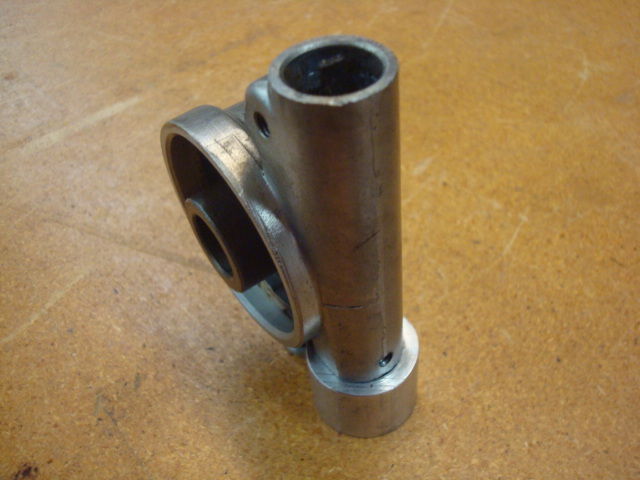
Hereís a picture of my support ring and a removed end cap.
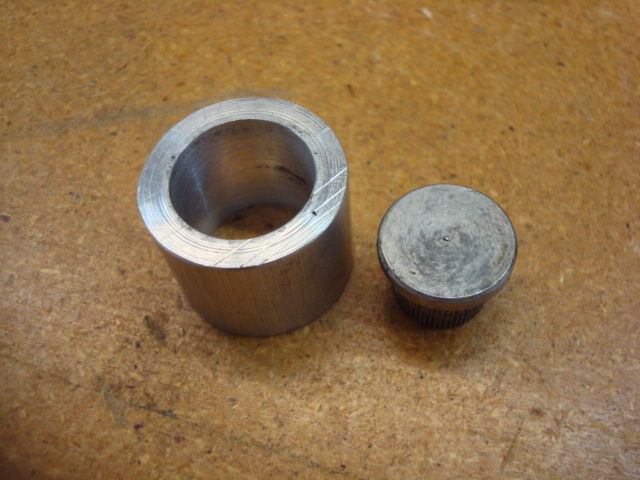
With the knurling on the cap they definitely werenít go to fall out and it almost seems like the set screw is overkill. Make sure if youíre rebuilding more than one gearbox that you keep the caps with the housings they came from, because of the knurling, so that the holes line up.
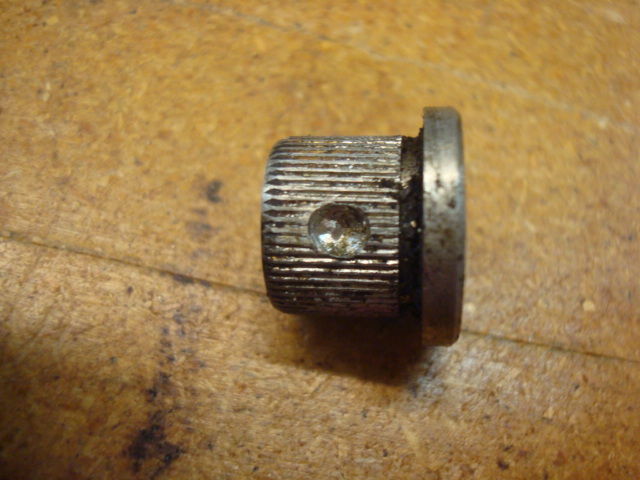
So once the end cap is off the worm can be removed. There is a washer that goes between the worm and the end cap. To remove the small seals I just drilled a small hole in them and screwed in a small sheet rock screw and they pulled right out.
Now for the good part. There are differences in the early and later gearboxes. Stay tuned for my next post.

Mark B1969 CB750 sandcast #97 restored - Sold
Restoration thread link1969 CB750 sandcaxt #576 - Sold
1969 CB750 sandcast #1553 - Sold
1969 CB750 sandcast #1990 - Sold
1969 CB750 sandcast #5383 restored - Sold
Restoration thread link1970 CB750 K0 restored - Sold
2010 H-D Tri Glide Ultra Classic (Huh?)